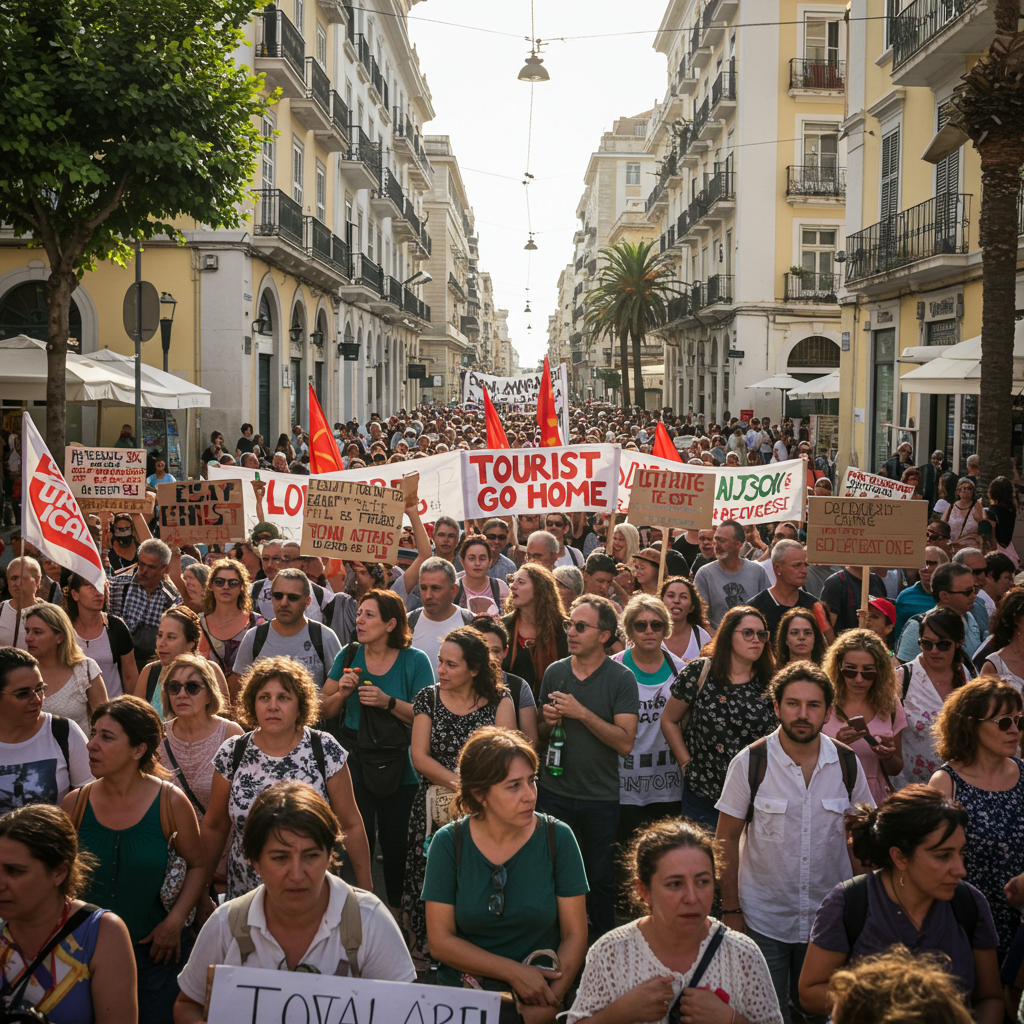Thousands of residents across southern Europe recently took to the streets in coordinated protests against the growing impacts of mass tourism, or what many are now calling “touristification.” From Spain and Italy to Portugal, the demonstrations highlight rising anger over how unchecked visitor numbers are reshaping cities and making life increasingly difficult for those who call them home.
Organized under the umbrella of the SET alliance, meaning “Southern Europe against Overtourism,” these actions represent a unified pushback against a tourism model critics argue prioritizes profit over people.
Why Locals Are Protesting: The Human Cost of Overtourism
The core grievances driving the movement are deeply rooted in the quality of life for residents. Protesters argue that the relentless influx of tourists and tourism-related businesses leads directly to:
Soaring Housing Prices: The proliferation of short-term rentals and investor purchases inflates rents and property values, pushing long-term residents out of their neighborhoods. Cities like Barcelona and Venice, where tourist beds can outnumber residents, are cited as stark examples of tourism physically taking over homes. In popular areas like Ibiza, some workers are reportedly forced to live in vans or tents due to the cost of housing.
Resident Displacement: As neighborhoods become unaffordable or saturated with tourist amenities, residents feel pressured to leave, eroding the local social fabric and cultural identity. Campaigners describe this process as transforming genuine places into “Disneyfied” versions focused solely on visitor consumption.
Environmental Strain: Increased visitor numbers strain local resources, including water supplies, particularly in drought-prone areas like the Balearic Islands, where locals face restrictions while tourist facilities maintain usage. Environmental groups also highlight concerns like airport expansions designed to accommodate more visitors, increasing carbon footprints.
Precarious Jobs: While tourism creates jobs, many are low-paying and insecure, offering little benefit to residents facing high living costs.
Erosion of Culture: Traditional shops and local businesses are replaced by tourist-focused outlets, and even local place names can change, signifying a loss of the area’s original character.
Chants like “Your holidays, my misery” and banners declaring “mass tourism kills the city” and “their greed brings us ruin” captured the sentiment of the protesters, directly linking the negative consequences to the scale of tourism and those perceived to be profiting from it.
Protests Span the Region
Barcelona served as a focal point for the recent wave of protests, though official estimates for the crowd size varied. Demonstrators there employed tactics including firing water pistols at shop windows, setting off colored smoke, and placing “Neighbourhood self-defence, tourist go home” stickers on businesses seen as symbols of the tourism takeover. This symbolic resistance, though sometimes criticized, is viewed by protesters as a response to the “real violence” of touristification, such as evictions and exploitation.
Similar demonstrations were held in cities across Spain (including Ibiza, Malaga, Palma de Mallorca, San Sebastian, and Granada), Italy (such as Genoa, Naples, Palermo, Milan, and Venice), and Portugal (Lisbon). These widespread actions underscore that the challenges posed by mass tourism are not isolated incidents but a shared struggle across southern Europe.
Cities Grapple with Solutions
Facing mounting pressure from residents, some authorities are starting to implement measures to mitigate tourism’s negative impacts:
Barcelona: The city government announced plans last year to ban tourist apartment rentals by 2028 to help make housing more accessible for residents.
Spain (Nationally/Regionally): The country, which welcomed a record 94 million international visitors last year, is taking various steps, including cracking down on nearly 66,000 unregulated tourist listings, reducing influencer campaigns that drive visitors to sensitive spots, using smart technology to monitor conditions like beach capacity, and encouraging visitors to explore lesser-known areas. Tourist taxes in some regions are also being adjusted to incentivize longer stays.
Beyond Southern Europe: Other European destinations facing similar pressures are exploring innovative approaches, such as Switzerland’s “Swisstainable” strategy to distribute tourism and promote off-season travel, or Berlin’s planned reward system for tourists engaging in sustainable behavior.
Despite these emerging initiatives, challenges remain. The significant contribution of air travel and cruising to overall visitor numbers and environmental impact requires broader solutions beyond destination-level actions. Without addressing the sheer volume of arrivals, particularly by these means, protests against overtourism and touristification are likely to continue as locals fight to reclaim their cities and ensure a sustainable future that benefits residents first.




